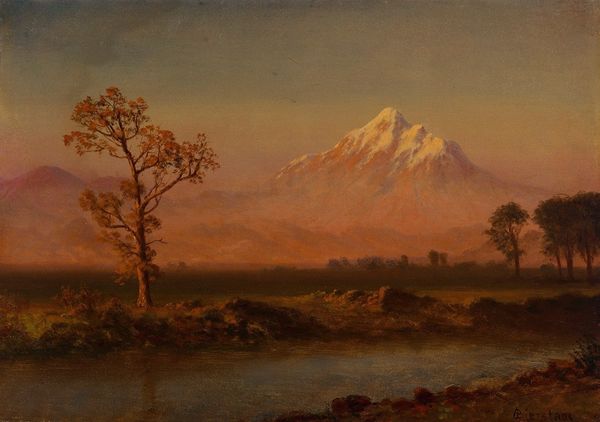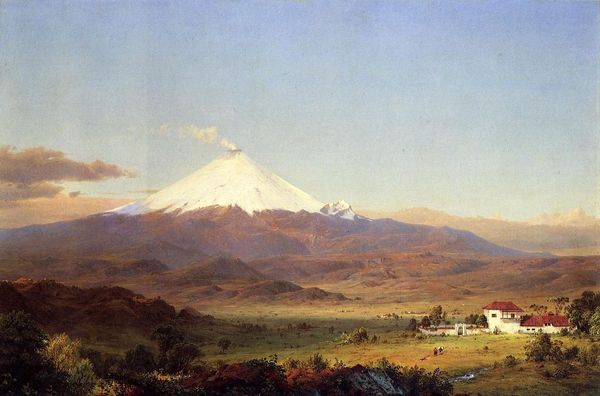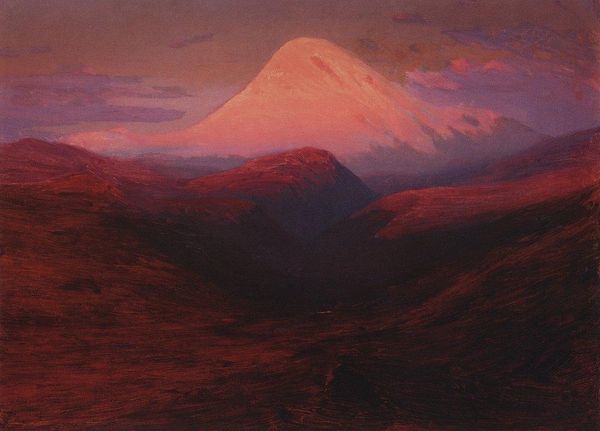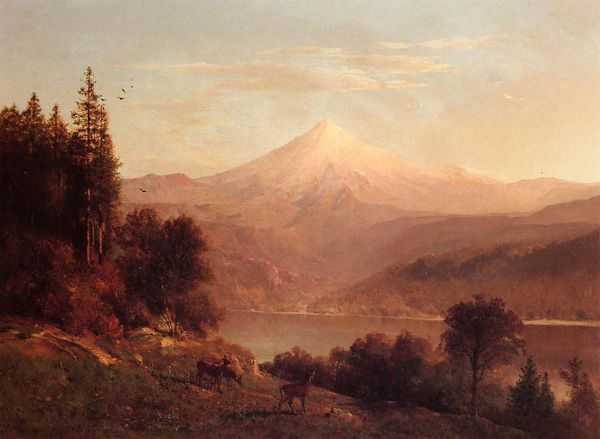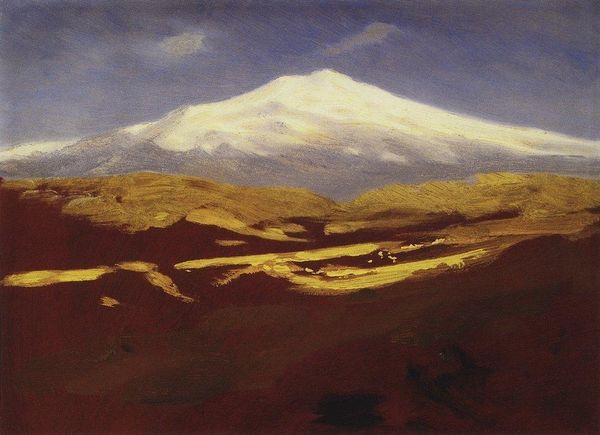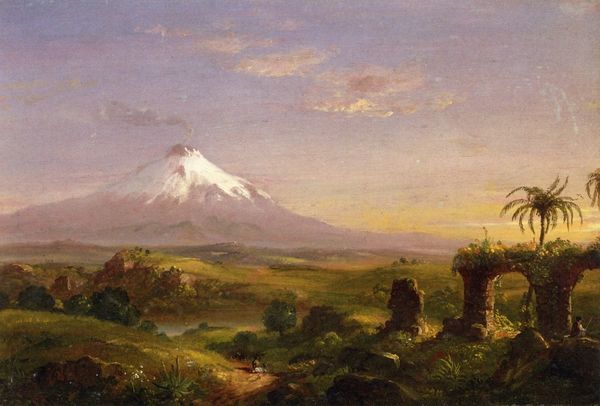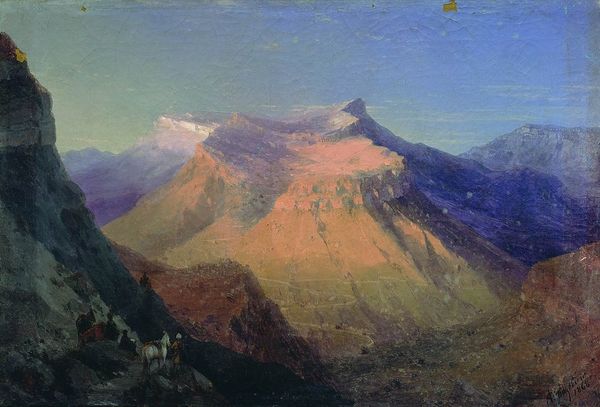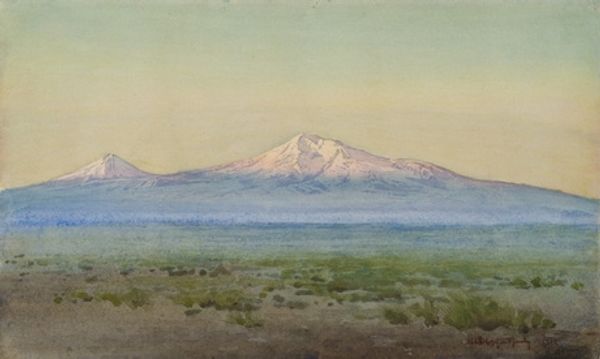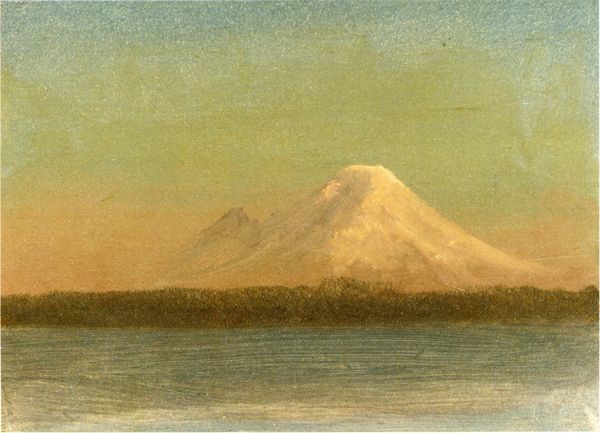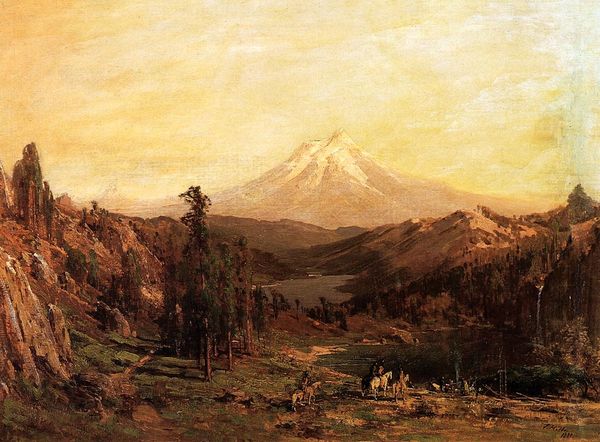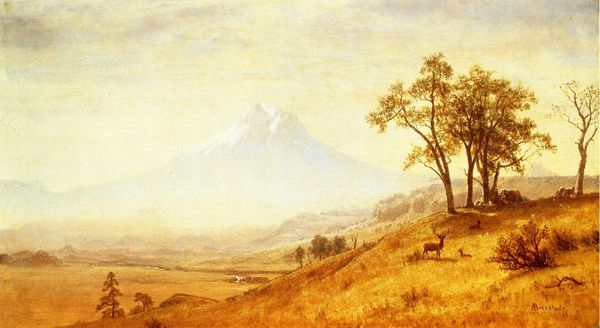
Dimensions: 40 x 65 cm
Copyright: Public domain
Editor: Here we have Aivazovsky’s "Araks River and Ararat," painted in 1875, rendered in oil. The sheer scale of the landscape gives it a really awe-inspiring, almost reverential, feel. What stands out to you, structurally? Curator: I am immediately drawn to the composition. Note how the horizon line is placed relatively high, emphasizing the immensity of the sky and the mountains. This contributes to a sense of sublime vastness, aligning with Romantic ideals. Consider, also, the artist’s use of atmospheric perspective. Editor: The way the colors fade and blur in the distance? Curator: Precisely. This blurring technique suggests an infinite depth and contributes to the emotional resonance of the work. Ask yourself: How does Aivazovsky manipulate color to direct your eye? Editor: It seems the warmer, earthier tones in the foreground lead you back towards the cooler blues and whites of the mountain peaks, drawing the eye upward. Also, the sharp contrast makes the painting stand out. Curator: Observe the materiality as well. Oil paint allows Aivazovsky to build layers of translucent glazes. Note especially in the rendering of the sky, how these glazes create a luminous quality. It is, after all, in these painterly manipulations that the artistic endeavor resides. Editor: So, it’s not just about representing the landscape, but also about the way the paint itself contributes to the overall effect? Curator: Exactly. The physical qualities of the medium actively shape our perception and emotional engagement with the scene. What new insights have you gleaned? Editor: I realize that analysing colour, depth, and even the layering of the oil paints helps one read how it all blends together into one striking romantic painting.
Comments
No comments
Be the first to comment and join the conversation on the ultimate creative platform.
